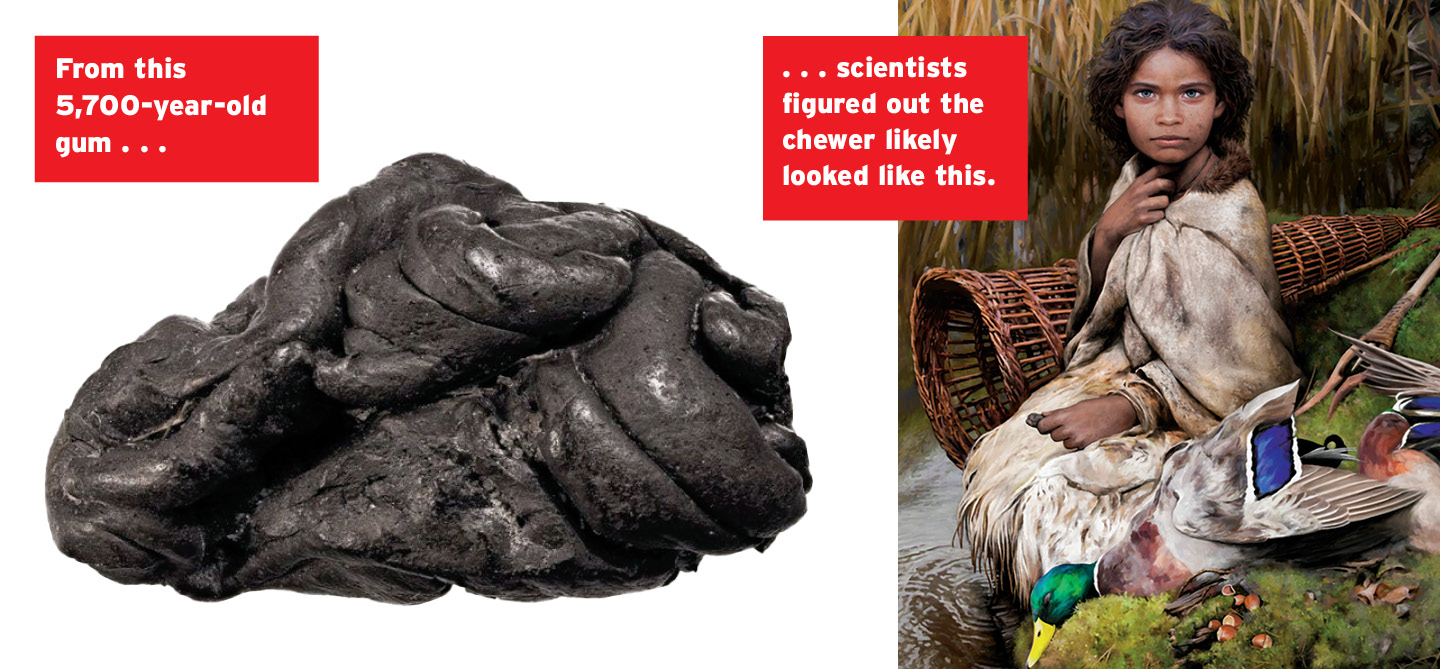When hunter-gatherers living in what is now Denmark popped sticky pieces of birch tar into their mouths about 5,700 years ago, they didn’t realize they were leaving future scientists their DNA. Ancient people used the sticky residue that comes out of birch bark to fix tools, and when it started to solidify, they rolled it in their mouths and chewed on it, like primitive bubble gum. Researchers recently found a wad of the gum, and the DNA in the saliva provided many details about who had chewed it: a woman with a dark complexion, dark hair, and blue eyes. (They could also tell she’d eaten duck and hazelnuts and couldn’t digest milk.) This information will help scientists better understand what life was like for some of our ancestors. “This is a snapshot of a real person in real time,” says Natalija Kashuba, an archaeologist at Uppsala University in Sweden. “It’s as close as we’ll ever come to standing face to face with an individual from the Stone Age of Scandinavia.”

Theis Jensen (gum); Illustration by Tom Björklund (Neolithic woman). Both images: Courtesy of University of Copenhagen
Text-to-Speech
